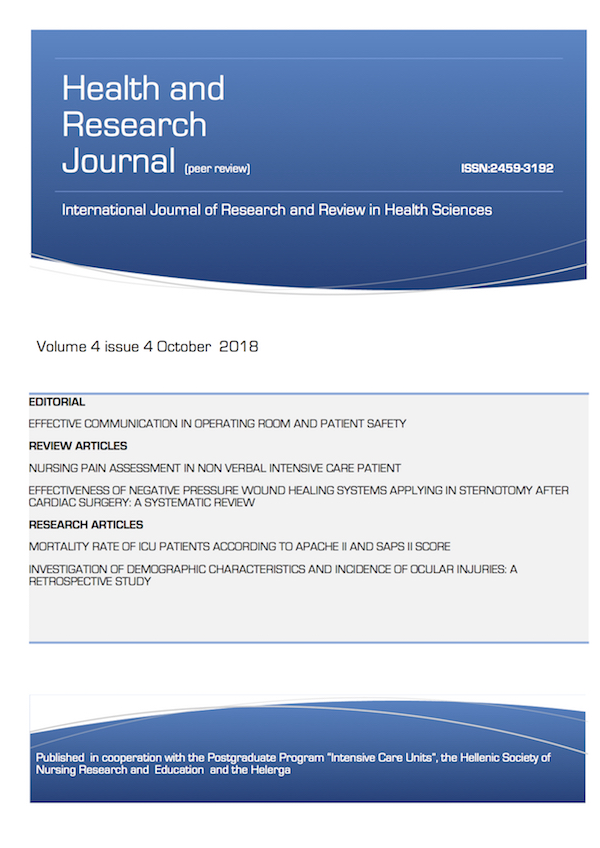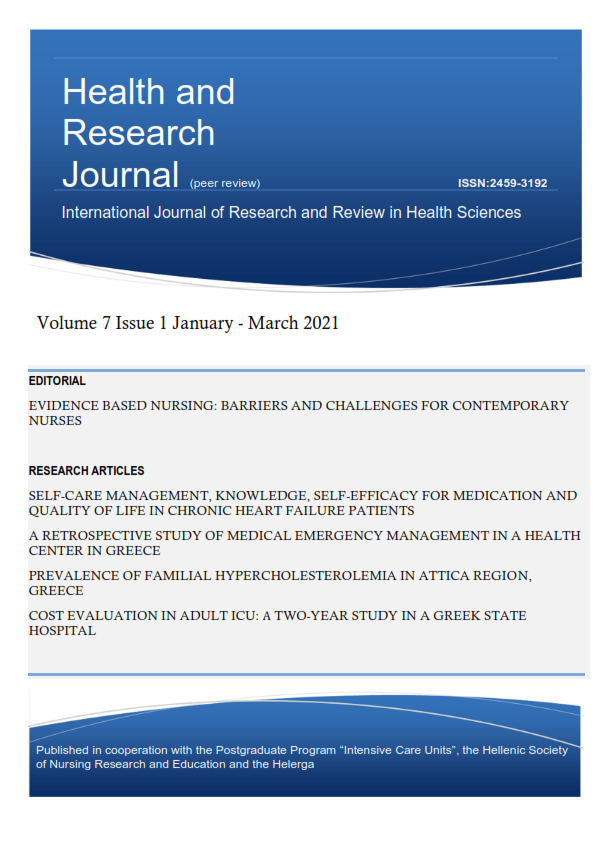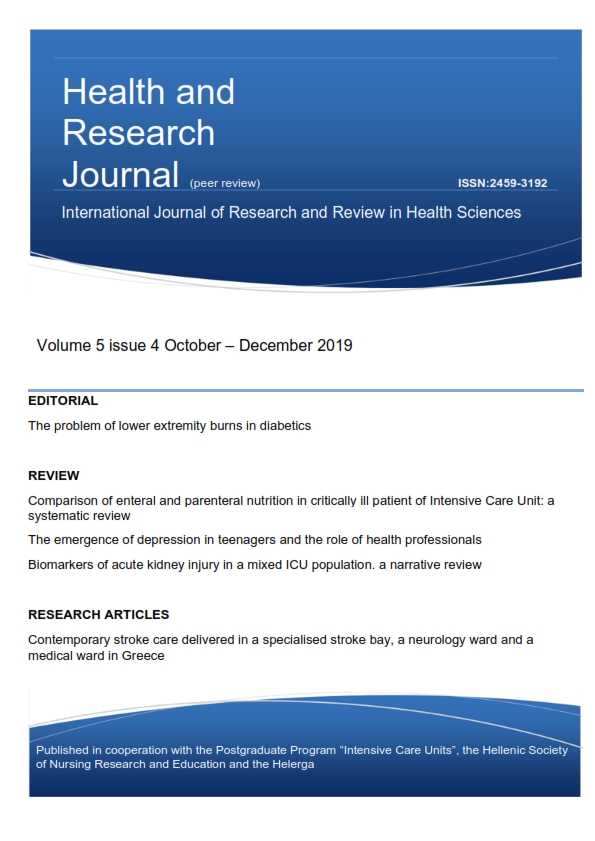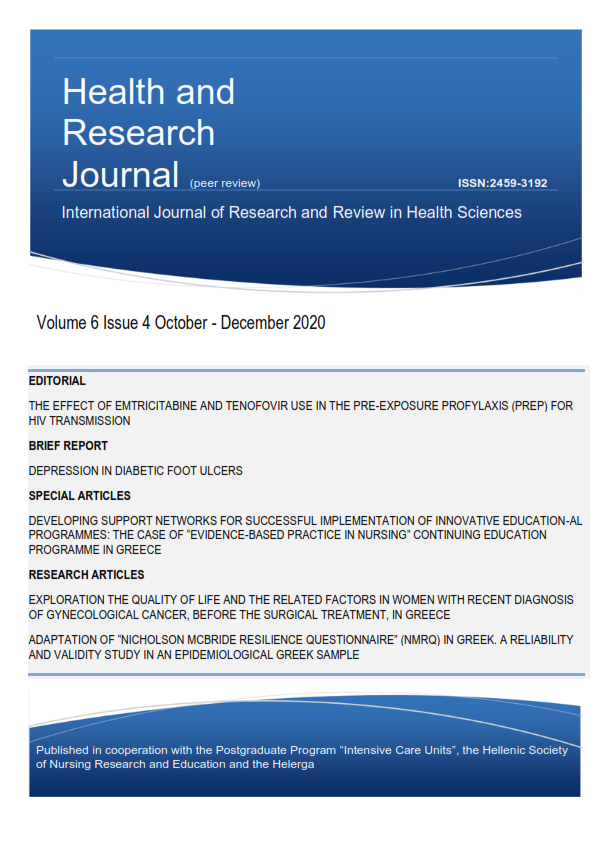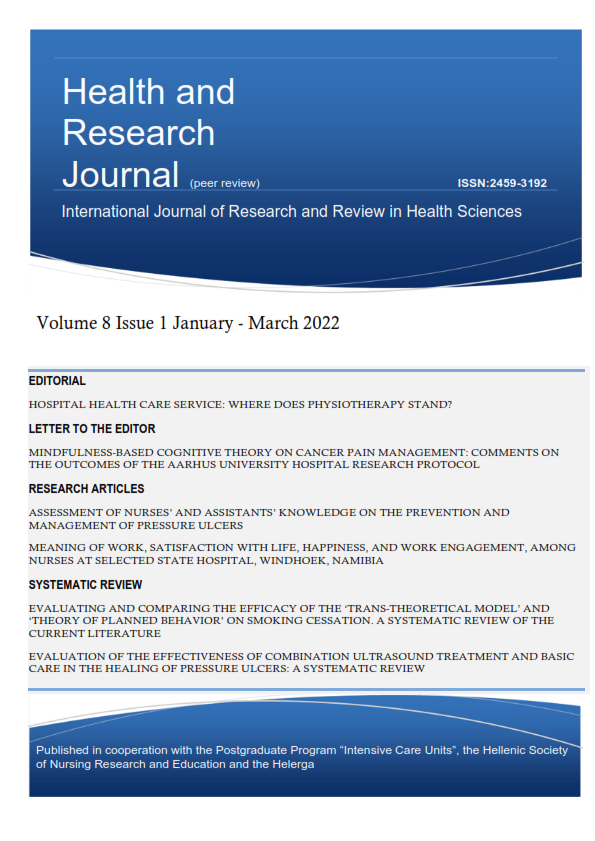Analgesia of acute abdominal pain in the Emergency Department
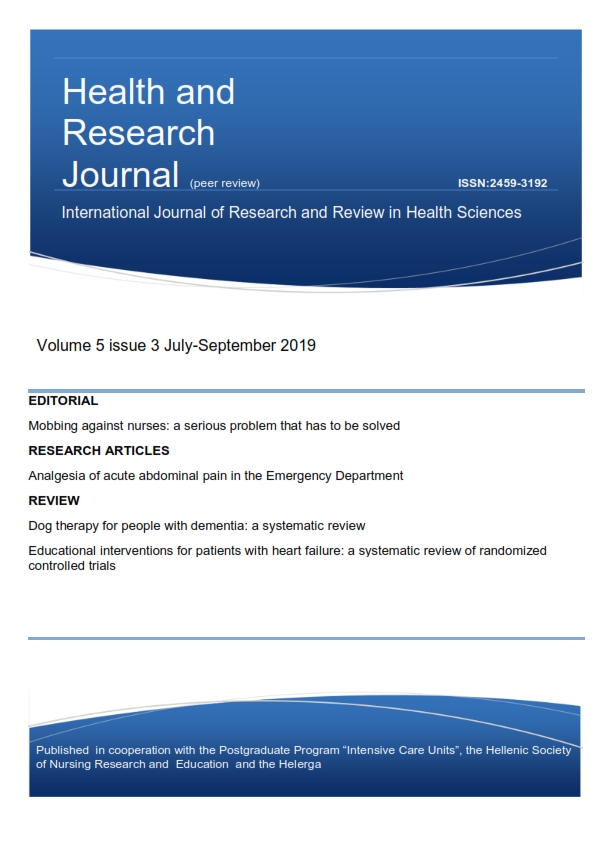
Abstract
Introduction: Pain accounts for 40% of all patients admitted to the Emergency Department (ED). The most common cause of pain is abdominal pain, which accounts for 8%. In contrast to the international guidelines, pain is under-treated making the phenomenon of oligoanalgesia apparent.
Aim: The purpose of this study was to explore the incidence of analgesia in patients admitted to the ED suffering from acute abdominal pain.
Material and Method: This is a descriptive cross-sectional study. The studied sample consisted of 197 patients, who admitted to the ED of a General Hospital of Athens, Greece with reported symptom: acute abdominal pain. For data collection, a special designed form of closed-type questionnaires was used. Data analysis was performed by using the Statistic Package for Social Sciences (SPSS) statistical packet ver.19.
Results: Out of the total number of patients admitted to ED with reported abdominal pain, 74.6% received analgesia and the mean time of analgesia administration during ED admission was 46.43 minutes. The mean pain intensity at the first time point measurement was 7.16 and at the second one was 4.04, according to pain recording scale (0-10 scale). Non-opioid anti-inflammatories (52.3%), non-steroidal analgesics (22.8%) and opioids (9.1%) were mainly administered patients during their ED stay
Conclusions: Despite the published international guidelines which refer to analgesia time and type, pain and especially abdominal pain, is under-treated. The key to tackling oligoanalgesia is to educate health professionals.
Article Details
- How to Cite
-
Kalaronis, P., Kalogianni, A., Kelesi, M., Evagelidou, E., Mpalla, I.-M., Karanasou, A., & Marvaki, C. (2019). Analgesia of acute abdominal pain in the Emergency Department. Health & Research Journal, 5(3), 86–98. https://doi.org/10.12681/healthresj.20999
- Section
- Original Articles
Copyright notice:
The journal "Health and Research Journal" reserves the rights for copyright of the content of the website and also the copyright of the articles published.
By virtue of their appearance in this journal, the articles are free to be used for non-commercial purposes. However, the articles cannot and must not be used in anyway, published elsewhere or modified without any reference to the author and the first publication of the article.




